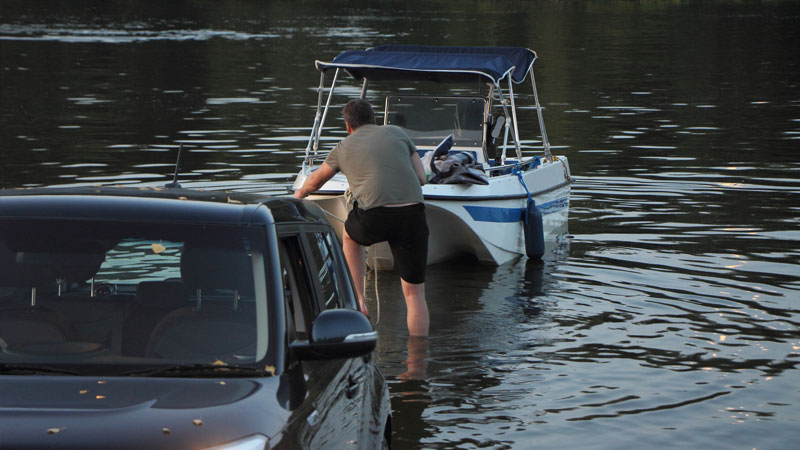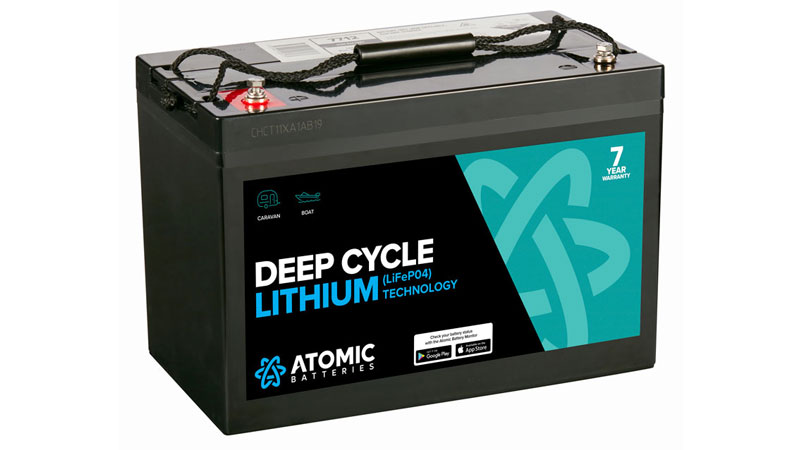Tips and Advice for Boat Battery Care
Warm spring days are here, and you have exciting plans on the water ahead. But before you head out, be sure to check your boat battery. The last thing you want is getting stuck at the ramp or on the water with a flat or dead battery.

Batteries play a crucial role in a boat, yet they’re frequently overlooked until they fail. A malfunctioning battery can lead to serious issues, particularly when you’re out on the water. It powers essential components like the motor, lighting, bilge pump, and depth sounder. The key to preventing battery failure is to look after them. We’ve put together some essential tips for a smooth trip. Let’s dive in!
Preparation Tips:
1. Run the Motor:
It’s advisable to start the engine before heading to out on the water. Check for signs such as intermittent starting or slow cranking which is likely to be caused by a failing battery.
2. Charge the Battery:
If the battery voltage is below the recommended level, charge the battery using a battery charger compatible with the type of battery installed. Always use a charger that meets the manufacturer’s charging recommendations. A multistage charger like SmartCharge can charge and maintain the battery when it’s not in use.
3. Avoid Overcharging:
Be cautious not to overcharge the battery, as it can damage the battery. This can lead to the battery being ‘cooked’ which causes excessive gassing and premature failure of the battery. So, it is essential to follow the manufacturer’s charging recommendations. Use a charger with built-in charging profiles that match the battery type.
4. Test Charge-holding
Remove the battery from the charger a day or two prior to your planned outing on the water and monitor the voltage to verify it’s holding the charge.
5. Visible Damage:
Check for any visible signs of damage on the battery, such as cracks or bulges and replace the battery if it’s damaged.
6. Clean Terminals and Connections:
Ensure that battery terminals and connections are clean and free from corrosion. Use a wire brush for cleaning.
7. Check Electrolyte Levels (for Flooded Batteries):
If you have a maintainable flooded lead-acid battery, check and, if necessary, refill the electrolyte levels using distilled water. Wet-cell marine batteries, especially deep-cycle ones, can experience high water loss. This is often due to evaporation caused by heat and chemical reactions. Regularly check and maintain the water level in maintainable batteries, using distilled water to prevent impurity buildup, and use safety glasses when doing so.
8. Perform a Voltage Test:
Use a multimeter to measure the voltage of the battery. A fully charged battery should read above 12.6 volts. If it’s failing to hold a charge, it may be time to consider replacing the battery.
9. Consider a Battery Backup:
Invest in a battery backup system to ensure you have power in case the primary battery fails.
10. Avoid Deep Discharges:
Prevent the lead acid battery from deep discharge, as it can shorten its lifespan. No more than 50% is recommended for a deep cycle lead acid battery. Recharge the battery promptly after each use.
11. Keep Battery Securely Mounted:
Ensure the battery is securely mounted to prevent vibration and movement during boat operation.
12. Inspect Battery Box (If applicable):
If your battery is housed in a box, check the box for any signs of damage or wear.
13. Have a Jump Starter Onboard:
Keep a portable jump starter like the Projecta IS-1220 on board in case of emergencies and familiarise yourself with its usage. Ensure there is adequate ventilation before connecting the jump starter to the battery. Given that many boat batteries are situated in enclosed spaces, it’s crucial to confirm there are no lingering fuel fumes before proceeding with the jumpstart.
14. Comprehensive Yearly Check:
Perform a thorough yearly check. Clean the battery box, inspect for leaks, examine tie-downs, and ensure the vent is clear of any obstructions.
What happens if your battery fails on the water?
Regrettably, there are limited options in this situation. The optimal solution would be to have a jump pack, such as the Projecta IS-1200, readily available on board.
Which battery is right for you?
To select the ideal battery for your specific requirements, it’s essential to start by evaluating the intended application. Batteries are generally designed for one of the following primary uses:
· Starting
· Dual purpose: starting and deep-cycle
· Deep cycle: steady power output over an extended period of time

Once you have identified the application, you can select the various battery types available.
For Starting and Dual-Purpose applications:
Absorbent Glass Mat (AGM) Batteries: AGM batteries are well-suited for both starting and dual-purpose use. They offer maintenance-free operation, excellent vibration resistance, and can be mounted at various angles, up to 90 degrees.
Flooded Lead Acid batteries:
These are available in maintenance-free or maintainable versions. They are a reliable choice for starting your boat's engine. Some variants of flooded lead acid can tolerate shallow cycling.
For Deep Cycle application:
Lithium Deep Cycle Batteries: stand as the top-tier choice. They require little to no maintenance, have a longer service life, and are superior in their deep cycle ability. While they come at a higher price point compared to other batteries, if you’re working with a limited budget, the next-best option would be an AGM battery.
AGM Deep Cycle Batteries: are the go-to choice for boating enthusiasts seeking reliable and maintenance-free power. Designed to handle the rigours of marine environments, AGM batteries offer exceptional vibration resistance and can be mounted to multiple angles up to 90°. With superior cycling capabilities, they ensure consistent performance on the water.
As you gear up for that family outing on the water, remember that your boat battery is the unsung hero that keeps everything running smoothly. A little pre-trip attention can save you from unexpected hiccups on the waves. Follow our essential steps to keep your trip smooth sailing.
If you have any questions our battery technicians can help you decide which battery is right for your boat and motor.
https://clubassist.com.au/Contact-Us
Or check out our range of batteries to suit your boat or yacht.
https://clubassist.com.au/Product-Range

